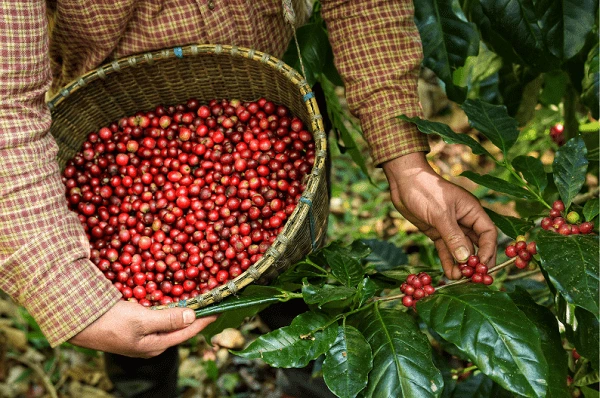Coffee
The Evolution of Coffee Beans From Wild Plant to Cultivated Crop
The Evolution of Coffee Beans:
Welcome to our blog on the evolution of coffee beans! Today, we’re taking you on a journey through time, exploring how a simple wild plant became one of the most beloved and widely consumed beverages in the world. From its origins in ancient Ethiopia to its present-day cultivation, the evolution of coffee beans has been a fascinating journey, shaped by discovery, culture, and passionate people.
The discovery of coffee, the spread of its cultivation, and the development of its cultivation and processing have shaped the global coffee industry and culture. The coffee plant has a rich and storied past, tracing its origins back to the ancient lands of Ethiopia, where legend has it, a goatherd stumbled upon the energizing effects of the bean when he noticed his goats becoming unusually lively after munching on the berries of a certain plant. From there, the bean spread across Africa and the Middle East, igniting a love affair that would eventually lead to its cultivation in other parts of the world.
The spread of coffee cultivation, the impact of colonialism and trade on coffee cultivation, and the growth of coffee as a major cash crop in countries such as Brazil, Colombia, and Vietnam have all played a significant role in shaping the global coffee industry and culture.
As we delve into this topic, we’ll explore the origins of coffee, its spread and cultivation, the impact it has had on local communities and the environment, and the current challenges and sustainability efforts in the coffee industry. We hope you’ll join us on this journey as we explore the fascinating history of coffee beans and the passionate people who have shaped it.
The Origins of Coffee: From Wild Plant to Cultivated Crop:
The story of coffee begins in ancient Ethiopia, where legend has it that a goatherd by the name of Kaldi discovered the bean. Kaldi noticed that his goats became more energetic and lively after eating the beans from a certain plant. Intrigued, he decided to try the beans himself and found that they had a similar energizing effect. From there, the discovery of coffee spread across Africa and the Middle East, igniting a love affair that would eventually lead to its cultivation in other parts of the world.
As a coffee spread, it quickly became a staple beverage, enjoyed for its energizing properties and rich flavor. People revered coffee for its medicinal benefits and believed that it possessed curative powers that could heal ailments and revitalize the body, beyond its energizing effects. Coffee soon spread to other parts of Africa and the Middle East, becoming a popular drink in places like Egypt, Arabia, and Turkey.
As the popularity of coffee grew, so did the desire to cultivate it. The wild ancestor of Coffea arabica was first tamed and cultivated in the misty highlands of Ethiopia. People spread coffee across Africa, the Middle East, Europe, and the Americas, where it became an integral part of the culture in each place it was introduced, starting from its birthplace.
Farmers and cultivators gradually developed the cultivation and domestication of coffee, influenced by the unique climates and terrains of the regions where it was grown. As they improved their cultivation techniques, the quality and consistency of the beans also improved. Today, coffee is grown in countries all over the world, each with its own distinct flavor profile, a result of the unique conditions in which farmers grow it.
The evolution of coffee beans from wild plants to cultivated crops has played a significant role in shaping the global coffee industry and culture. It’s a fascinating journey, shaped by discovery, culture, and passionate people. As we continue to explore the history of coffee beans, we’ll delve deeper into the spread of coffee cultivation and the impact it has had on local communities and the environment.
A Global Phenomenon: The Spread of Coffee Cultivation:
The spread of coffee cultivation beyond Ethiopia and the Middle East was a gradual process, but once it reached Europe and the Americas, it quickly became a staple beverage. Coffee was first introduced to Europe by traders and travelers who had visited the Middle East, and it quickly became a popular drink among the upper classes.
The introduction of coffee to the Americas, particularly in countries such as Brazil and Colombia, was a result of colonialism and the slave trade. European colonizers brought enslaved Africans to work on coffee plantations, and the crop quickly became a major cash crop in these countries. The emergence of coffee as a major cash crop in these countries had a significant impact on their economies and cultures.
The impact of colonialism and trade on coffee cultivation cannot be overstated. It changed the way the world consumed and produced coffee, and it also had a significant impact on the economies and cultures of countries where coffee was grown. In places like Brazil and Colombia, coffee became a major cash crop and played a significant role in shaping their economies and cultures.
Today, coffee is a global phenomenon, grown in countries all over the world, each with its own distinct flavor profile. The spread of coffee cultivation has had a profound impact on the world, shaping economies, cultures, and the way we consume and enjoy our beloved brew. As we continue to explore the history of coffee beans, we’ll delve deeper into the impact of colonialism and trade on coffee cultivation, and how it shaped the world we know today.
The Dark Side of Coffee: The Impact of Cultivation:
As the demand for coffee grew, so did the pressure to produce it on a large scale. Unfortunately, the expansion of coffee cultivation has had negative impacts on local communities and the environment. The human cost of coffee cultivation is significant, with many local communities being displaced or forced to work in exploitative conditions on coffee plantations.
The environmental impact of large-scale coffee cultivation is also significant. The expansion of coffee cultivation has led to the destruction of natural habitats and the displacement of local wildlife. Pesticides and fertilizers used in coffee cultivation can also contaminate water sources and harm local ecosystems.
Despite these negative impacts, there are efforts to make coffee cultivation more sustainable. Many coffee farmers are now using more environmentally friendly practices, such as shade-grown coffee, which helps to preserve natural habitats and biodiversity. Additionally, many coffee companies are now sourcing their beans from fair trade and organic farms, which help to support local communities and protect the environment.
The current challenges and sustainability efforts in the coffee industry are focused on finding ways to produce coffee in a more sustainable and ethical way. The fight for a better future for coffee cultivation is ongoing, and it requires the cooperation of farmers, companies, and consumers. As we continue to explore the history of coffee beans, we’ll delve deeper into the current challenges and sustainability efforts in the coffee industry and the role we all play in shaping a better future for coffee cultivation.
Conclusion:
As we come to the end of our journey exploring the evolution of coffee beans, it’s clear that this beloved drink has a rich and captivating history. From its wild origins in ancient Ethiopia to its present-day cultivation, the evolution of coffee beans has been shaped by discovery, culture, and passionate people.
However, as we’ve seen, the expansion of coffee cultivation has also had negative impacts on local communities and the environment. The future of coffee cultivation is closely tied to sustainability practices, it’s crucial to find ways to produce coffee in a more sustainable and ethical way.
The future of coffee cultivation is vital to preserving this beloved drink for generations to come. It’s important that we all play our part in supporting sustainable and ethical coffee production, whether it’s by choosing fair trade and organic coffee or supporting farmers who use environmentally friendly practices.
The evolution of coffee beans has been a fascinating journey, and it’s clear that the story of coffee is far from over. As we continue to enjoy our daily cup of coffee, let’s remember the passion, culture, and discovery that has shaped this beloved drink and work to preserve it for future generations.

